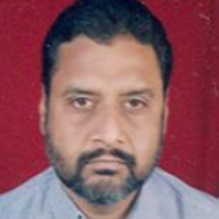
Rajiv Saxena
Work place: Department of Electronics and Communication Engineering, Jaypee University of Engineering and Technology, Guna, India
E-mail: rsaxena2001@yahoo.com
Website:
Research Interests: Computational Engineering, Computer systems and computational processes, Engineering
Biography
Dr. Rajiv Saxena, born at Gwalior in Madhya Pradesh in 1961, obtained B.E. (Electronics & Telecommunication Engineering) in the year 1982 from Jabalpur University, Jabalpur. Subsequently, Dr. Saxena joined the Reliance Industries, Ahmedabad, as Graduate Trainee. In 1984, Dr. Saxena joined Madhav Institute of Technology & Science, Gwalior as Lecturer in Electronics Engineering. He obtained his M.E. (Digital Techniques & Data Processing) from Jiwaji University, Gwalior in 1990. The Ph. D. degree was conferred on him in 1996-97 in Electronics & Computer Engineering from IIT, Roorkee (erstwhile UOR, Roorkee). Currently Dr. Saxena is head and professor in ECE department at JUET, Guna.
Author Articles
Fixed Windows in Fractional Fourier Domain
By Rahul Pachauri Sanjeev N. Sharma Rajiv Saxena
DOI: https://doi.org/10.5815/ijigsp.2014.02.01, Pub. Date: 8 Jan. 2014
In this study, some mathematical relations have been derived for the useful parameters of fixed window functions in fractional Fourier transform (FRFT) domain. These reported expressions are also verified with the simulation studies. The FRFT provides an important extension to conventional Fourier transform with an additional degree of freedom by which these parameters of window functions can be controlled while inherent time domain behavior of the windows remains intact. The behavior of fixed windows on time-frequency plane has been varied by varying the FRFT order. The obtained variability in the window functions has been applied in the designing of FIR filters.
[...] Read more.MIMO Capacity Analysis Using Adaptive Semi Blind Channel Estimation with Modified Precoder and Decoder for Time Varying Spatial Channel
DOI: https://doi.org/10.5815/ijitcs.2012.10.01, Pub. Date: 8 Sep. 2012
Multiple Input Multiple Output(MIMO) has been in much importance in recent past because of high capacity gain over a single antenna system. In this article, analysis over the capacity of the MIMO channel systems with spatial channel with modified precoder and decoder has been considered when the channel state information (CSI) is considered partial. Due to delay in acquiring transmitted information at the receiver end, the time selective fading wireless channel often induces incomplete or partial CSI. The dynamic CSI model has also been implemented consisting channel mean and covariance which leads to extracting of channel estimates and error covariance which then further applied with the modified precoder and decoder utilizing both the parameters indicating the CSI quality since these are the functions of temporal correlation factor, and based on this, the model covers data from perfect to statistical CSI, either partially or fully blind. It is found that in case of partial and imperfect CSI, the capacity depends on the statistical properties of the error in the CSI which has been manipulated according to the precoder and decoder conditions.
Based on the knowledge of statistical distribution of the deviations in CSI knowledge, a new approach which maximizes the capacity of spatial channel model with modified precoder and decoder has been tried. The interference then interactively reduced by employing the iterative channel estimation and data detection approach, where by utilizing the detected symbols from the previous iteration, multiuser/MIMO channel estimation and symbol detection is improved.
Other Articles
Subscribe to receive issue release notifications and newsletters from MECS Press journals